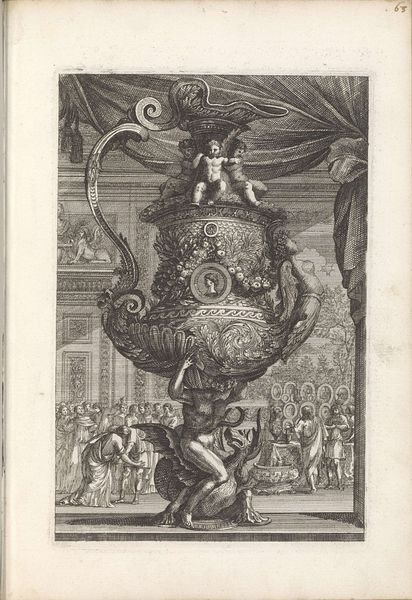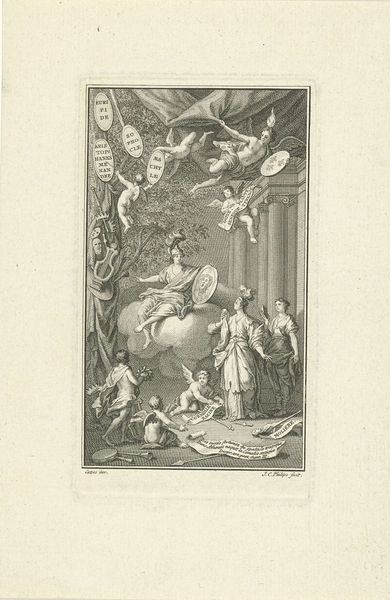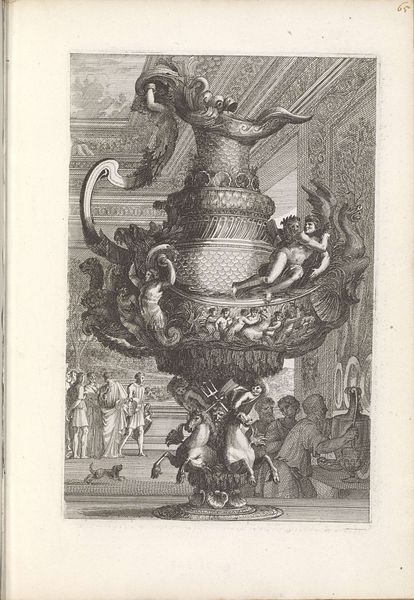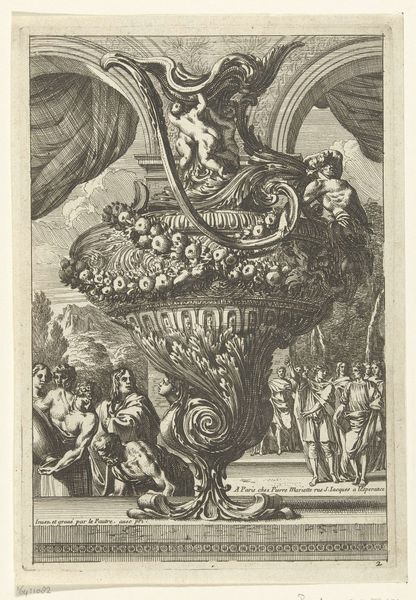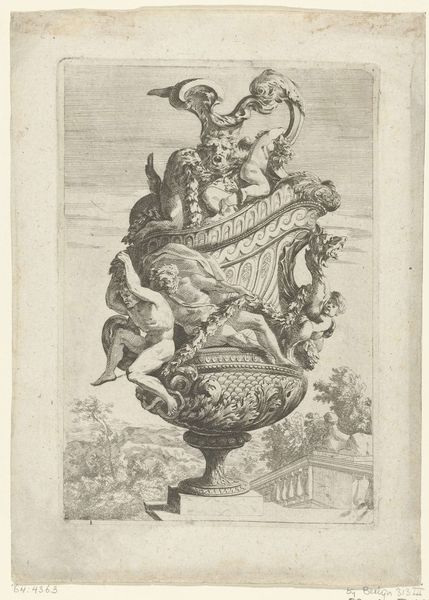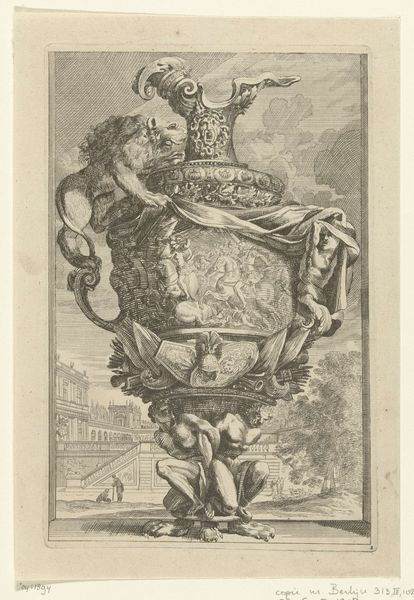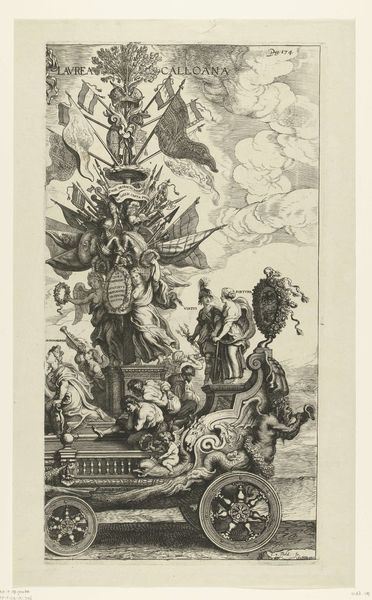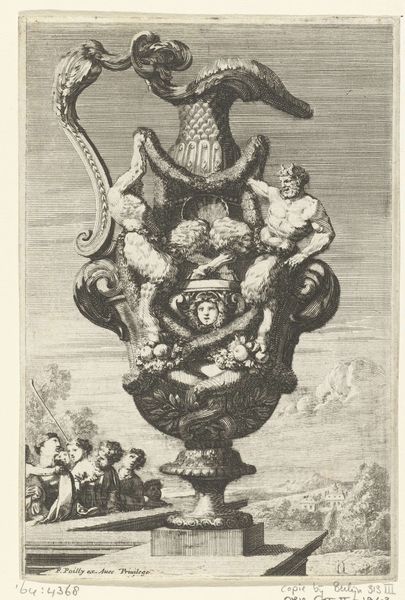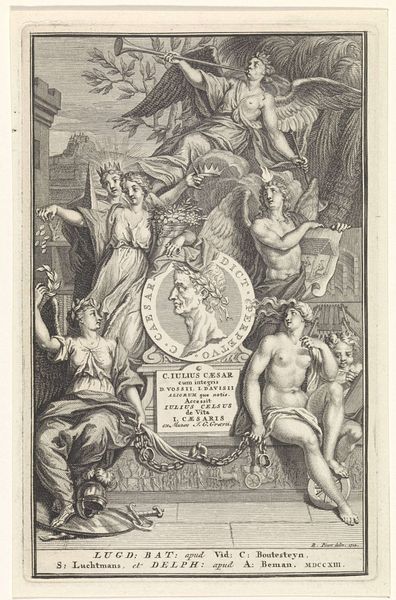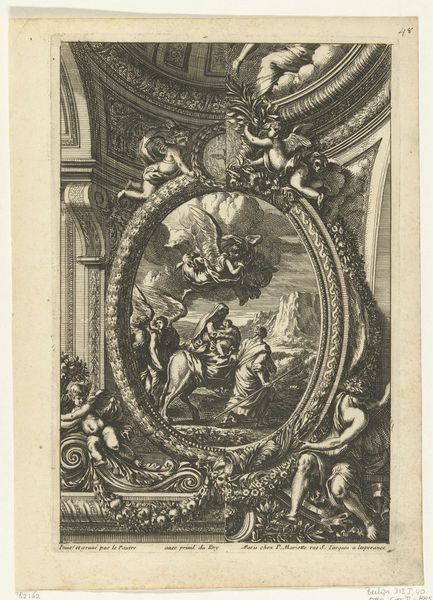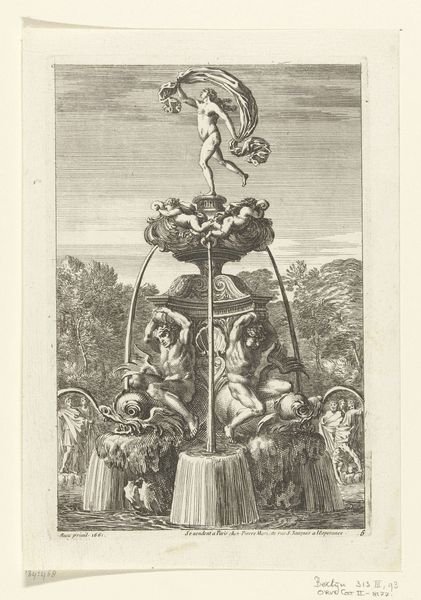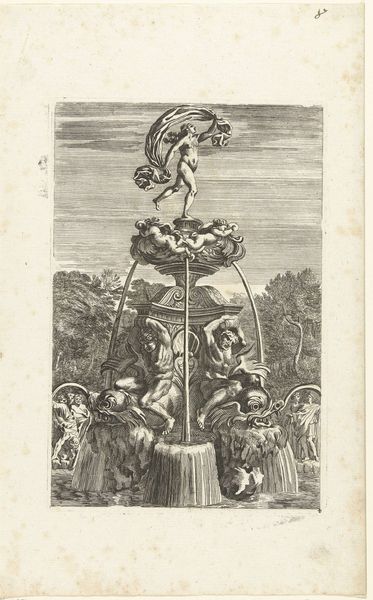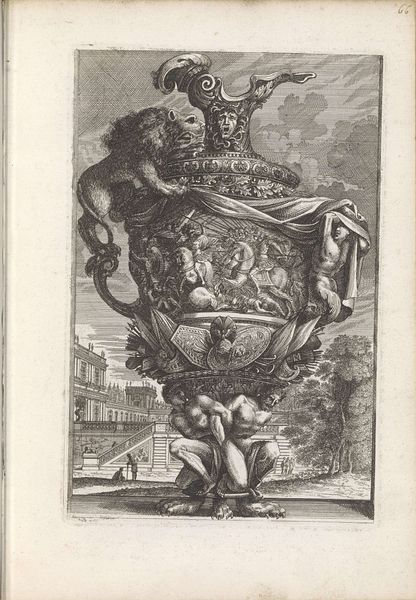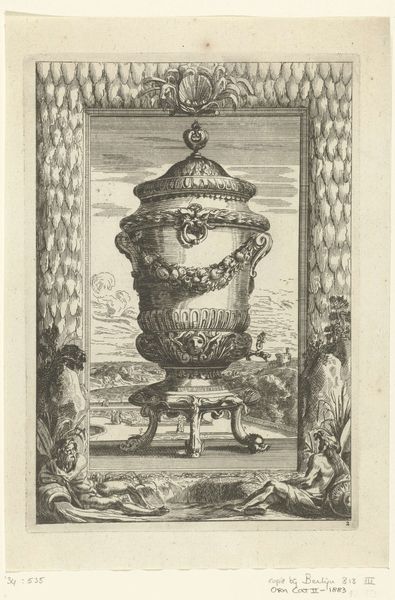
#
pencil drawn
#
aged paper
#
toned paper
#
light pencil work
#
pencil sketch
#
old engraving style
#
personal sketchbook
#
sketchbook drawing
#
pencil work
#
sketchbook art
Dimensions: height 219 mm, width 144 mm
Copyright: Rijks Museum: Open Domain
Curator: The detail in this pencil sketch is incredible. Cornelis Danckerts the Second rendered this study of a "Schenkkan naar rechts gekeerd," or "ewer turned to the right," sometime between 1696 and 1717. It's part of the Rijksmuseum's collection. Editor: It has a strangely dramatic atmosphere for what is essentially a study of an object. The composition, with its stark contrast and grotesque figures, evokes a sense of Baroque theatricality. It's a far cry from your typical still life. Curator: Indeed. Notice how Danckerts uses the aged, toned paper to his advantage, allowing the delicate pencil work to create a sense of depth and shadow. The cross-hatching is especially effective in modeling the complex curves of the ewer. I'm intrigued by how the vessel is topped by chubby putti figures, while struggling humanoid demons are forever burdened beneath. It begs to reason why such oppositional symbols were coupled together here? Editor: That stark juxtaposition could be an allusion to vanitas imagery. The ewer itself, a symbol of luxury, rests precariously upon the suffering of these figures. We see that in order for beautiful objects to flourish, there is exploitation behind it. The ewer is then also juxtaposed with imagery of angels and demons—reminding us of how humans exist at an in-between nexus of this good and evil duality. It's an allegory of the fleeting nature of worldly pleasures. It suggests those cherubs on top were blind and privileged and blissfully unconcerned of it all! Curator: The theatrical backdrop reinforces that sense of staged drama, framing the ewer within a larger narrative. If we remove the religious interpretations you propose, we are left with a showcase of light pencil work used to construct an overall image using depth and value. It's all line work and mark-making! The details are incredible but its power relies on basic artistic concepts. Editor: Perhaps. But consider how those artistic decisions also bolster that symbolic reading. Ultimately, "Schenkkan naar rechts gekeerd" transcends a simple study of form, instead giving way to a haunting memento mori, reflecting on themes of luxury and hidden hardship. Curator: Ultimately it is just nice to consider this piece, no matter what, from the artist's personal sketchbook as a work that showcases a level of artistic technical aptitude.
Comments
No comments
Be the first to comment and join the conversation on the ultimate creative platform.
